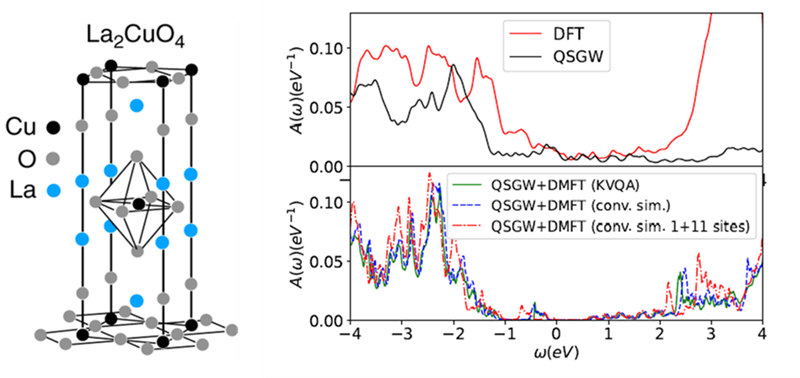Strongly correlated materials have a wide range of applications in multi-billion-pound industries, for example in solar cells, batteries, spintronics, and low-loss electronics. Materials simulation is crucial for the industry to reduce the need for expensive lab trials in materials design. These require the dynamical mean field theory (DMFT) to obtain results in agreement with experiments. However, state-of-the-art accurate DMFT simulation methods are limited due to the exponential increase of required computational resources with system size. Quantum computers offer a potential exponential speed-up for such materials simulations. In this project, in collaboration with the NQCC we develop a scalable quantum computing DMFT algorithm to perform such materials simulations on a quantum computer.
In this collaborative project with the National Quantum Computing Center (NQCC) we are developing a new quantum algorithm where we overcome the main limitation of the previous one. We showed that this algorithm has the potential to be more scalable than the previous one while keeping the quantum circuit accessible for near-term quantum computers
This work builds on an earlier InnovateUK funded QUANTIFI project, where we developed a quantum algorithm for NISQ devices to simulate small strongly correlated materials. In particular, we developed an iterative technique based on the Krylov basis to compute the Green’s function which is a key quantity in materials simulation. We demonstrate our algorithm on a quantum emulator where we performed a real materials simulation: La2CuO4, a prototypal charge transfer insulator. In this algorithm, we only used a shallow circuit to be compatible with current NISQ devices. This algorithm is explained in an arxiv manuscript.

Electronic structure calculation performed using the Krylov variational quantum algorithm to treat the strongly correlated electrons of La2CuO4 on a 8 qubit quantum emulator
The next step going forward to quantum advantage is to adapt these algorithms to early quantum error-corrected quantum computers. Recently, experimental implementation of prototypal quantum error correction has been proven, in the next years, we will have access to progressively bigger quantum computers with limited quantum error correction. To take advantage of these new technologies, we will need to develop new quantum algorithms compatible with quantum error correction.
This is an NQCC project.